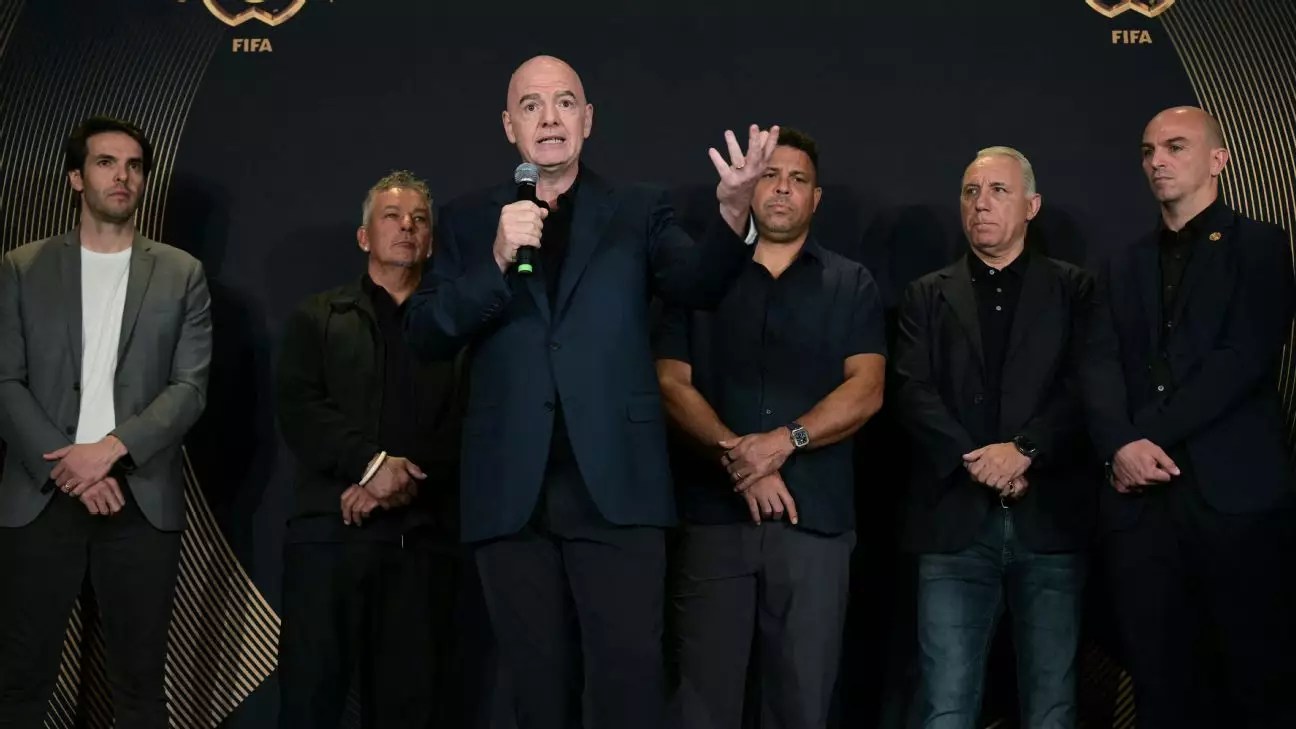In an era where climate change is an undeniable reality, sporting events must evolve beyond traditional venues to ensure player safety and audience enjoyment. FIFA’s recent announcement about incorporating roofed stadiums for the 2026 World Cup marks a pivotal shift toward resilient infrastructure. By prioritizing covered, climate-controlled venues, FIFA demonstrates a forward-thinking approach to climate adaptation, recognizing that outdoor event planning cannot ignore rising temperatures and unpredictable weather patterns.
This proactive stance is a bold acknowledgment that the future of global sports hinges on technological and architectural innovation. The integration of air-conditioned stadiums in host cities like Atlanta, Dallas, Houston, and Vancouver signifies a move away from the outdated assumptions of perfect weather. These interventions do not merely serve convenience; they are vital lifelines that protect athletes from dangerous heatwaves and thunderstorms, both of which have already caused disruptions in recent tournaments.
However, critics might argue that such infrastructural enhancements could diminish the authentic outdoor experience cherished by fans and players alike. Yet, the overarching goal should be safeguarding human health and maintaining the integrity of the sport. Climate-resilient venues can serve as models for other major sporting events, catalyzing a global shift toward sustainable and adaptive sports infrastructure. Emphasizing technology-driven solutions positions FIFA as a leader in climate-conscious event organization and sets a precedent for future international sporting competitions.
Addressing the Heat Wave Crisis in a World of Increasing Extremes
The concerns raised during the Club World Cup in the United States illuminate a critical issue: the physical toll that extreme heat takes on athletes. The alarming reports of players experiencing dizziness and calls for schedule adjustments reveal that current scheduling strategies are inadequate for dealing with the escalating intensity of summer temperatures. The fact that FIFPRO highlighted three matches that should have been postponed underscores an urgent need for reform.
The weight of these realities demands more than mere commentary; it calls for systemic change. Tournament organizers must prioritize health by designing schedules that avoid peak heat hours, incorporating sufficient cooling breaks, and ensuring access to hydration and medical support. The Athlete Welfare Framework should become a fundamental criterion in event planning, integrated into standards and vetted by medical experts.
Furthermore, this crisis presents an opportunity to redefine sports competitions in a hotter world. Innovative scheduling, technological cooling measures, and adaptable venues collectively serve as a blueprint for future tournaments. It is no longer sustainable to pretend that extreme weather is an occasional anomaly; it is a predictable and growing threat that must be strategically managed. Sports organizations, therefore, bear a responsibility not just to entertain but also to uphold athlete safety, setting an ethical standard for global sporting integrity.
Global Engagement and Leadership: Embracing Political and Cultural Significance
FIFA’s stance on inclusivity and international cooperation emerges strongly through its efforts to expand the Club World Cup and its engagement with political leaders. Gianni Infantino’s declaration of President Donald Trump’s attendance at the final underscores the sport’s potential as a diplomatic and cultural bridge. Beyond mere spectacle, these events serve as symbols of unity and shared passions that transcend borders and politics.
FIFA’s willingness to invite top European clubs like Liverpool, Arsenal, and Barcelona, despite criticism over the tournament’s format, demonstrates an ambition to elevate the sport’s global profile. It is an acknowledgment that the landscape of international football is dynamic and competitive, driven by individual fan bases’ passions and regional ambitions. While qualification criteria and tournament structures may face scrutiny, FIFA’s openness to innovation and adaptation shows a strategic vision: extend the reach of soccer, foster deeper engagement, and elevate its status as a universal language.
This approach, however, necessitates a delicate balance. Expanding tournaments and inviting high-profile clubs must be accompanied by efforts to ensure fairness, sustainability, and respect for local traditions. Politically, the integration of prominent figures like Trump into the event signifies recognition of soccer as a unifying force capable of influencing diplomatic discourse. Such engagement can catalyze broader conversations around social issues, inclusivity, and global cooperation, positioning FIFA as not just a sports organization but a platform for positive societal change.
The continuous evolution of FIFA’s strategies reflects an understanding that sports do not exist in isolation—they are part of larger societal and environmental systems. By investing in resilient infrastructure, advocating for athlete safety amidst climate extremes, and fostering international collaboration, the organization is charting a new course that emphasizes responsibility and progress.
This future forward approach challenges skeptics to see beyond traditional boundaries. It advocates for smarter choices that prioritize health and sustainability while affirming soccer’s role as a worldwide connector. In doing so, FIFA not only responds to immediate challenges but also lays the groundwork for a more resilient, inclusive, and inspiring sporting future.


Leave a Reply